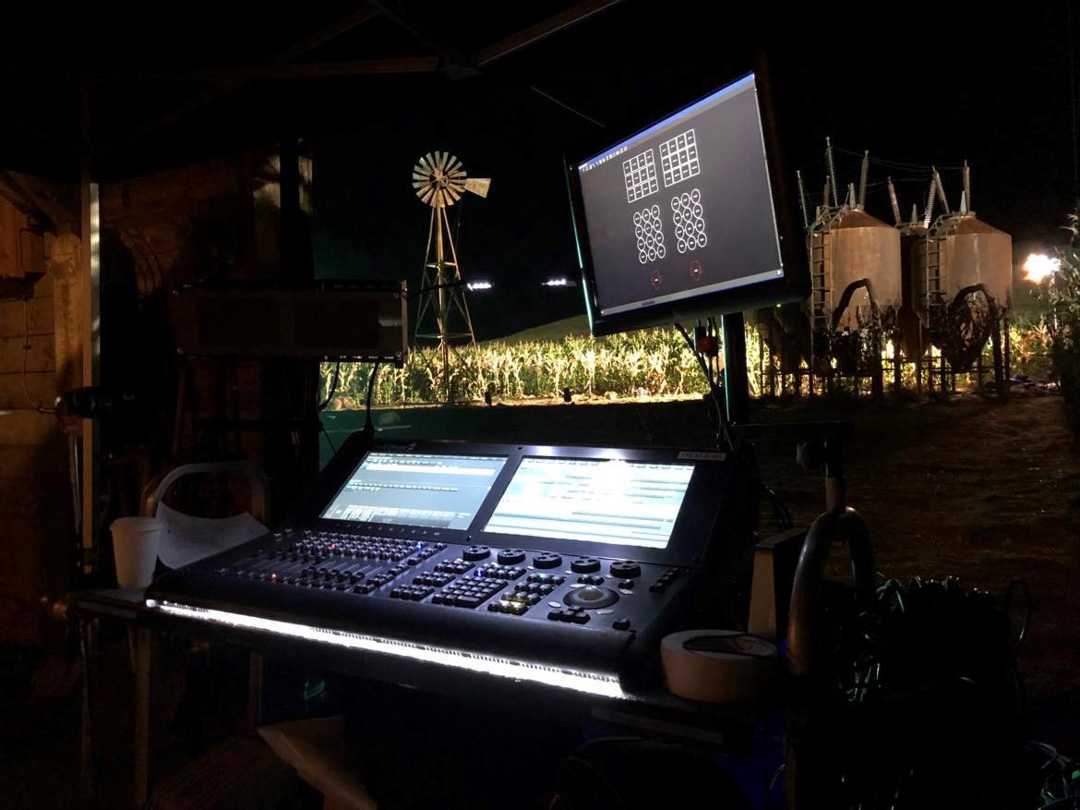Hog 4 in control on Ghostbusters: Afterlife
- Details

The crew travelled to Calgary and neighbouring communities, also working in Crossfield, Beiseker, and Drumheller over several months of principal photography. To handle the fast-paced needs of the production, set lighting programmer Benoit Richard used an extensive Hog 4 control system to network the production.
As a Ghostbusters fan, Benoit is quick to thank Gaffer Michael Ambrose for getting him this gig. “Nothing would have been possible without Michael calling and offering one of the jobs of a lifetime. I was a teenager when the original came out in 1984 - when he asked, of course I said yes! Manhattan Beach Studio Equipment filled a truck with Arri SkyPanels and a bunch of other lights that we couldn’t get in Canada, and I sent my usual package at the time - four Rack Hogs, my Full Boar 4, and we also brought a Road Hog for our Canadian rigging programmer, Erin Nelligan, to use when preparing sets for us.”
According to Benoit, the prep was quite short, and the crew went straight into a camera test as soon as he arrived. Simultaneously, he was teaching the Canadian rigging crew the ways of Hog control. “With Ghostbusters, we turned some heads on how to do modern lighting control for movie sets,” he says. “The show was scheduled as very location front heavy, which meant that out of the 14 weeks of shooting, we were going on the road for the first eight weeks. Shooting on location for that long gave the rigging crew more time to prep the three sound stages, which were turned over to different sets a few times throughout filming.”
For the location work, Benoit’s Rack Hogs leapfrogged from one location to another. “We always had a point for our big location rigs to be fed from the Rack Hogs, like the Spinners Diner, the Sheriff's Office and the Rust City Refinery where the kids meet Muncher for the first time.”
“We ran dual Gigabit networks to feed sACN to DMX nodes at all the distros, and then we ran HogNet as a separate network so I could connect my Full Boar anywhere on set. The same networking concept was used at the stages. Most productions love to do ‘splinter shooting’, where they ask for the ‘C’ camera to go to stage 2 to get a quick insert, while we are still shooting on Stage 1. In my little room, I was able to have a separate console logged into the server on the other stage and could control both sets at the same time.”
















